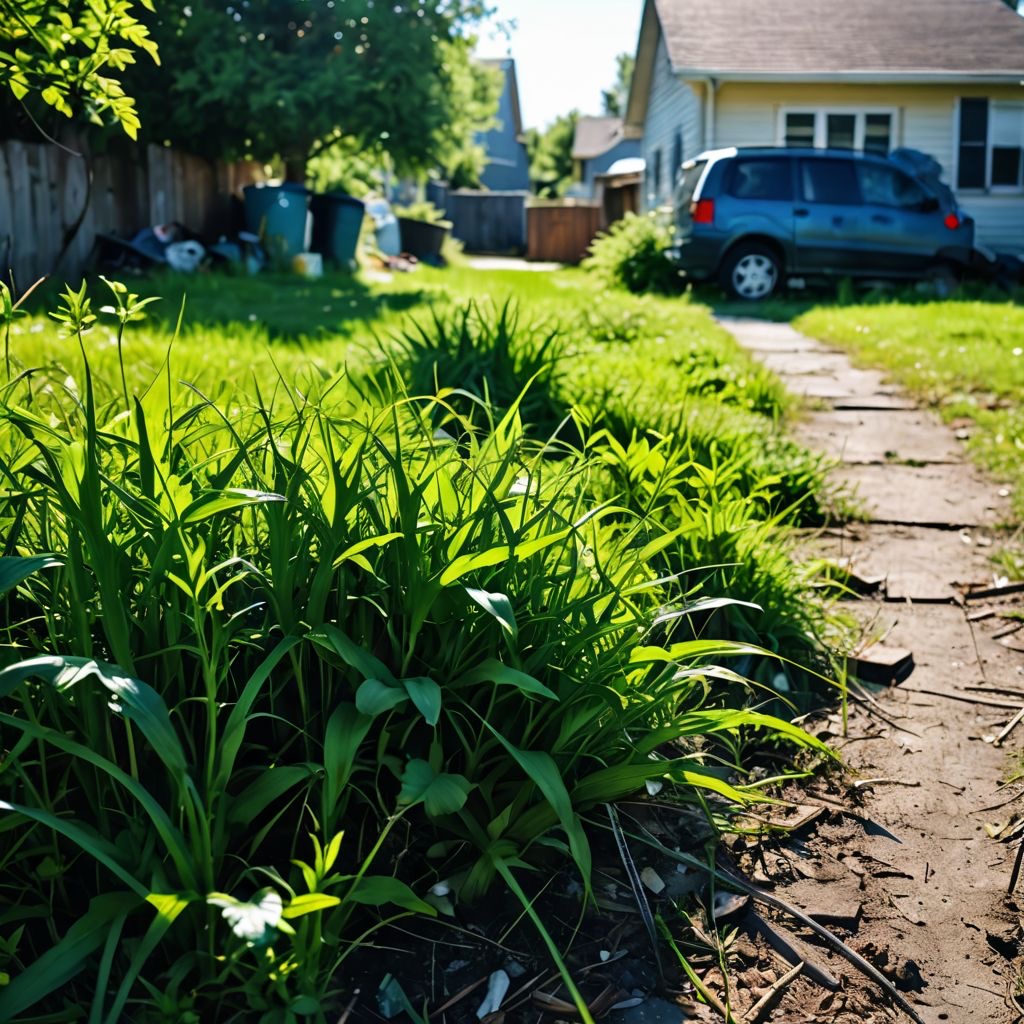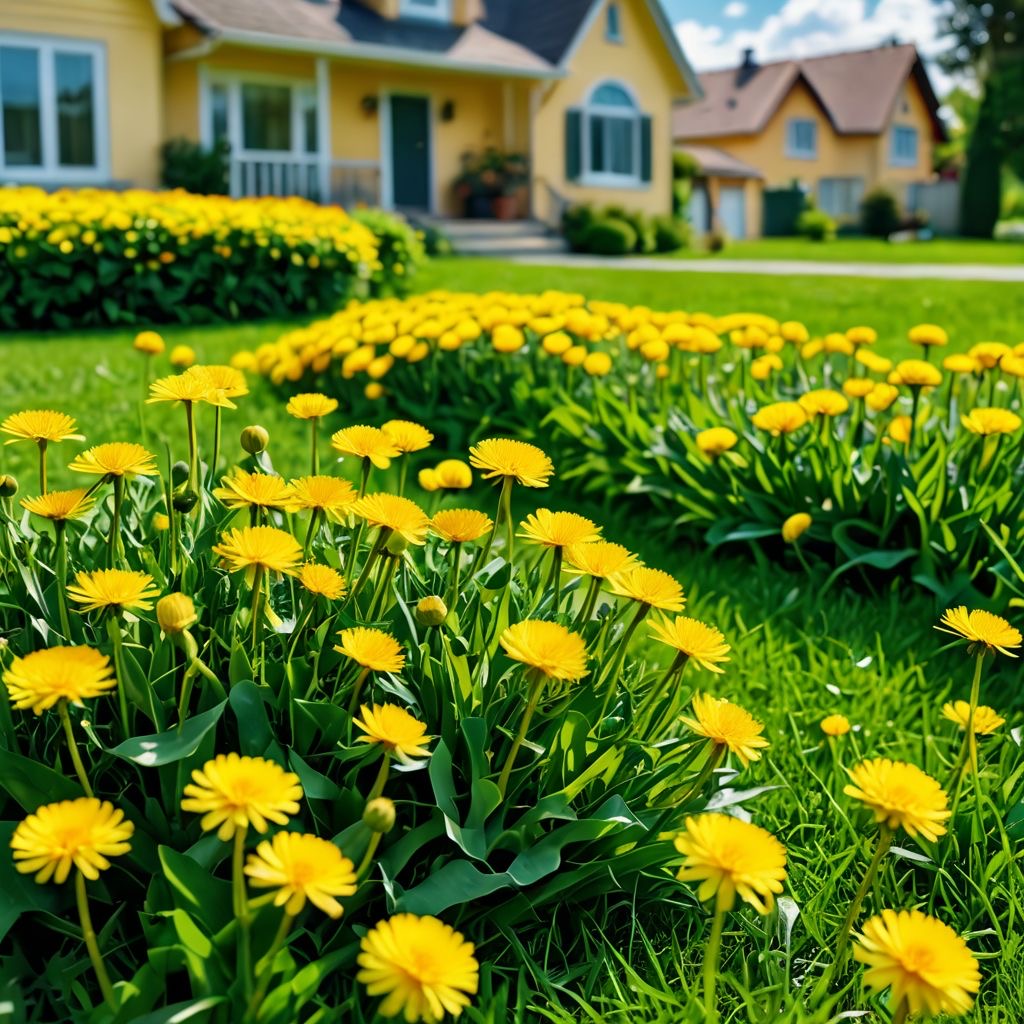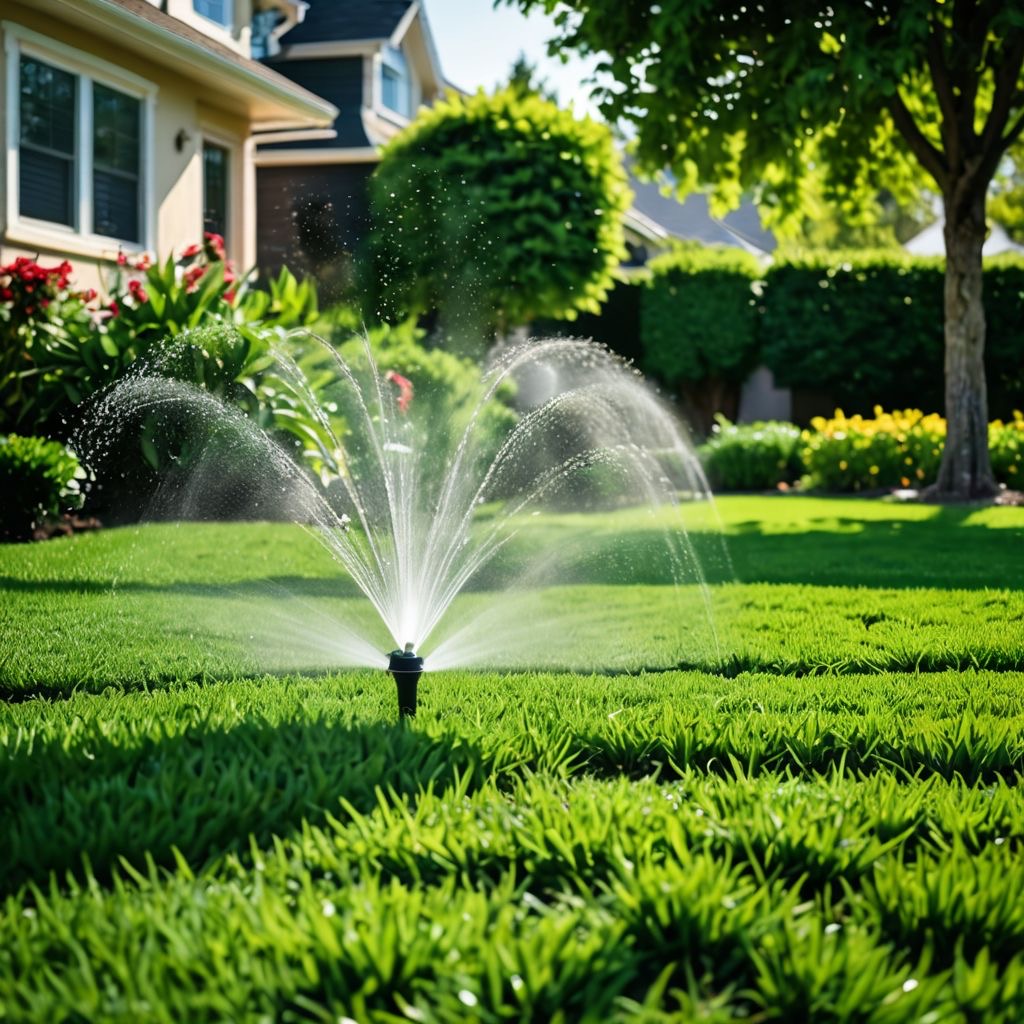
Table of Contents:
1. Introduction
2. The Balancing Act: Managing Time as a Winnipeg Homeowner
- 2.1. Embracing a Time-Saving Mindset
- 2.2. Identifying High-Value Tasks
3. Top Five Lawn Care Concerns for Winnipeg Homeowners in 2025
- 3.1. Effective Weed Control
- 3.2. Managing Lawn Diseases
- 3.3. Optimal Watering Practices
- 3.4. Ideal Mowing Heights and Frequency
- 3.5. Understanding Local Bylaws
4. Practical Time Management Strategies for Lawn Care
- 4.1. Scheduling Regular Maintenance
- 4.2. Utilizing Technology
- 4.3. Breaking Tasks into Smaller Steps
- 4.4. Leveraging Professional Services
5. Real-Life Case Studies: Successful Time Management
- 5.1. The Johnson Family
- 5.2. The Patel Family
6. Conclusion
1. Introduction:
Picture this: it’s a sunny Saturday morning in Winnipeg, the kind that promises fun and relaxation. You intend to unwind, perhaps sip coffee on your patio while the kids play in the yard. But then you glance out at your lawn, and it hits you—the grass is overgrown, the weeds are vying for supremacy, and the flower beds are a bit on the wild side. Your serene plans are quickly traded for feelings of dread as yard work looms over your weekend.

This scenario is all too familiar for many busy parents and homeowners trying to juggle yard maintenance responsibilities along with work, family activities, and, let’s not forget, a little much-needed personal time. With so many demands pulling at your attention, what often gets sidelined? That’s right—your outdoor space, which is an essential part of your living environment.
Balancing these responsibilities is challenging, and it's easy to ask yourself, "Is cutting the grass worth the hassle?" Should you really trade that precious Saturday morning for a few hours of yard work and lawn mowing? Or is there a smarter way to manage it all? This blog serves as your friendly guide, packed with productivity hacks and time management tips designed specifically for Winnipeg homeowners and parents who want to keep their lawns looking great without forfeiting all their free time.
Throughout this piece, we’ll discuss common lawn care questions homeowners have as we head deeper into 2025, explore practical strategies to optimize yard work, and look at when it might make sense to call in the pros. You deserve a beautiful yard without sacrificing the weekends meant for family fun. So, take a deep breath, grab your favorite drink, and let’s explore how we can help you manage yard work and enjoy your home life more effectively!
2. The Balancing Act: Managing Time as a Homeowner:
2.1. Embracing a Time-Saving Mindset
The first step in mastering your yard work is adopting a productive mindset. A successful homeowner understands that efficiency isn’t just about getting things done; it’s about allocating your time where it matters most. This means regularly asking yourself, "What truly needs to be tackled?" instead of just charging straight into the fray.
When prioritizing tasks, consider the three categories often embraced by productivity gurus:

1. Urgent and important tasks: These need immediate attention, like cutting grass before it gets too long to manage easily.
2. Important but not urgent: These tasks, such as long-term lawn maintenance, can wait but are crucial for future success. Scheduling a one-time aeration or reseeding, for example, falls into this category.
3. Neither urgent nor important: Activities that can be completely eliminated or delegated, like extra upkeep that doesn’t add significant value to your property's appearance or health.
Understanding these categories will help you focus your energy effectively. Remember, no one can do it all—delegate mundane tasks when possible, and remain mindful about how to spend your limited hours each week.
Another key aspect of mindset involves setting realistic expectations for yourself and your family. Life can get hectic, and you might not always have that perfectly manicured lawn. Remember, your yard doesn't have to look like a golf course to be considered well-maintained and livable. As long as it remains free of weeds, properly watered, and provides a safe environment for family activities, it’s doing its job.
2.2. Identifying High-Value Tasks
As a busy parent or homeowner, clarity in identifying which tasks yield the most meaningful results is vital. Prioritization means investing your time and energy into efforts that will either maintain or elevate your lawn’s health and visual appeal.
Here’s a quick breakdown of common activities and their value:
1. Weed control: Regularly addressing weeds can prevent them from taking over precious lawn real estate. Utilize hand-weeding or organic herbicides as necessary.
2. Fertilization: Providing nutrients is essential, but you can often get away with fertilizing a couple of times a season, especially if you utilize a quality slow-release product.
3. Mowing regularly: Perhaps the most visible aspect of lawn care. Keeping your grass trimmed will improve its overall health and curb appeal.
4. Pest Monitoring: Stay vigilant for pests, especially in mid-summer. Prevention and early management are critical to maintaining a healthy lawn.
5. Seasonal Clean-Up: Clearing leaves and debris not only improves the visual aspect of your yard but also helps reduce the risk of disease.
Focusing on these high-value tasks allows you to maintain a visually appealing lawn without getting overwhelmed or losing precious family time. Remember, it’s all about working smarter, not harder.
Top Five Lawn Care Concerns for Winnipeg Homeowners in 2025:
As we move into 2025, increasingly conscientious homeowners are tackling questions and concerns related to lawn care. Based on common concerns from our community, let's dive into information that can help guide homeowners in maintaining a lush and healthy lawn.
Contact us today for your free estimate.
3.1. Effective Weed Control

One of the top questions homeowners ask relates to how to control pesky weeds, particularly persistent species like dandelions and quackgrass. Environmentally friendly methods are increasingly preferred, and they can be surprisingly effective when correctly applied.
Start by investing in a quality mulching mower. This type of mower cuts the grass in a way that creates small clippings, which decompose and enrich the soil while also shading weed seeds. Combine this with proper mowing height—typically 2.5 to 3 inches for most grasses—to promote healthy growth and discourage weeds.
Additionally, caring for your lawn with regular fertilization can create a denser turf that outcompetes weeds. Integrated pest management strategies can aid in controlling invasive weeds more sustainably without relying solely on chemical herbicides.
When it comes to applying organic lawn fertilizers Winnipeg trusts Sunshine's many years of experience. Read more about exploring organic lawn treatments.
3.2. Managing Lawn Diseases
Winnipeg's unique climate poses specific challenges for lawn care, including certain diseases that can affect grass. Managing common issues such as snow mold, red thread, and leaf spot involves careful surveillance and prompt action.
Performing regular lawn checks to identify outbreaks allows for early intervention. For example, ensuring proper drainage can minimize the risk of snow mold by preventing water accumulation. Aeration plays a critical role too—this practice helps relieve soil compaction and enhances airflow. Additionally, maintaining proper cutting practices—never removing more than one-third of the grass height at a time—ensures health during periods of stress.
Another helpful tip? Strengthening your turf with quality, organic fertilizers can promote stronger grass growth, making it less susceptible to diseases overall.
Explore more about lawn care Winnipeg disease protection
3.3. Optimal Watering Practices

With varying weather conditions, many homeowners wonder, “What’s the ideal way to manage watering in Winnipeg?" The truth is the right balance can lead to a thriving lawn.
First, you want deep and infrequent watering—ideally giving your lawn 1 inch of water every week. This encourages deeper root growth and resilience during dry spells. You can use a rain gauge or even simple tuna cans as a tool to measure how much water you’re putting down.
Noting that Winnipeg experiences a mix of rainfall and sunny days, consider installing a rain barrel to catch natural precipitation. Connect it to irrigation systems for a sustainable lawn care solution.
3.4. Ideal Mowing Heights and Frequency
A question that frequently arises pertains to the best cutting height for various grasses common in Winnipeg. The frequency of mowing can vary, but following the proper heights ensures the health of your lawn.
For example, Kentucky bluegrass thrives when kept at a height between 2.5 to 3 inches, while tall fescue generally prefers heights of around 3 to 4 inches. Adjust your mowing schedule based on the growth pattern—potentially doing so once a week during peak growing seasons.
Also, don't forget about blade sharpness; sharp blades make clean cuts, reducing stress on your grass.
3.5. Understanding Local Bylaws

A question that should be addressed includes, “What are the City of Winnipeg's bylaws regarding lawn maintenance?” Each homeowner should be aware of local regulations that pertain to yard care responsibilities.
Generally, the city mandates that grass does not exceed 8 inches in height, and proper weed control is enforced to maintain community standards. It’s essential to stay informed about any specific regulations concerning mower noise, especially during early morning or late evening hours. Knowledge of these bylaws ensures community harmony and helps prevent possible fines from neglecting your yard.
Read more about bylaws & lawn care Winnipeg etiquette
4. Practical Time Management Strategies for Lawn Care Winnipeg:
To balance yard duties efficiently, homeowners should employ practical time management strategies. Here are techniques that can streamline your lawn work while ensuring you don’t lose precious family time.
4.1. Scheduling Regular Maintenance
To effectively manage lawn care, establishing a schedule is vital. Treat your lawn maintenance just like any other essential appointment in your calendar, ensuring no task slips through the cracks.
Creating a seasonal calendar can help! By blocking off specific days for essential lawn chores—mowing, weeding, and feeding—you’ll reduce life’s natural chaos. Sharing this schedule within the family can turn yard work into collective weekend activities, combining chores with quality family time.
Once you’ve established a routine, it’s easier to own up to your natural responsibilities while also making your family yard time interactive and enjoyable.
4.2. Utilizing Technology
In what seems like an endless tech-savvy world, why not let technology assist you with yard maintenance? Scheduling apps can help you monitor your lawn duties without stressing.
Consider investing in smart irrigation systems. These high-tech approaches conserve water while ensuring healthy grass growth, saving time and tailoring solutions for your unique landscape. Many apps can also remind you of scheduled lawn care tasks, helping you keep everything on track.
You’re already busy—we want to eliminate the stress of managing schedules!
4.3. Breaking Tasks into Smaller Steps
Tackling yard maintenance can feel daunting, but by breaking it into smaller tasks, you’ll find managing responsibilities easier and less overwhelming. For instance, instead of planning to mow the entire yard in one go, split it into manageable sections, treating each area like its own micro-task.
This approach applies to weeding or fertilizing, too. Allocate 10 to 15 minutes each day to dedicated tasks. Not only does this prevent fatigue, but it can actually be enjoyable to step outside for a few moments each day, rather than hours at a time.
4.4. Leveraging Professional Services

Let’s be honest—sometimes DIY approaches can become overwhelming. Hiring professionals for specific tasks is an option that can save you time and energy, allowing you to focus on what truly matters at home.
Finding trustworthy services for yard care or seasonal snow removal can bring a sigh of relief. Regular lawn care services can keep your landscape looking great without you needing to lift a finger.
Contact us today for your free estimate.

Research local options, asking for reviews from friends and checking service records for reliability. Searching phrases like: Lawn Care near me; yard maintenance Winnipeg and Snow plowing Winnipeg will introduce you to a number of very good, reliable and reputable companies to choose from.
Many companies offer seasonal packages that provide savings and convenience. It’s often worth spending a bit more to enjoy your time fully instead of dedicating yourself to yard work during leisure hours.
5. Real-Life Case Studies: Successful Time Management:
5.1. The Johnson Family
Take, for example, the Johnsons—a family of four living in the vibrant St. Boniface neighborhood. After a hectic week of work and school activities, yard work often felt like a daunting extra chore. The family struggled with balancing responsibilities, too often finding their weekends consumed by overwhelming yard tasks instead of family fun.
To resolve this, they created a shared family calendar citing specific yard days. This allowed clarity around duties with expectations set among the group. Their processes included hiring a yard maintenance company to mow while the kids managed flower beds or weed pulling during afternoons.
Quickly, they formed a Saturday morning routine—share breakfast, head outdoors for designated yard time, and celebrate completed tasks together before enjoying a game or park outing! The Johnsons ended up saving time while still nurturing their landscape and family bonds.
5.2. The Patel Family

Next, consider the Patel family from Tuxedo. Like many busy parents, they faced challenging schedules filled with work commitments and children’s activities. Mowing the lawn became an afterthought, often resulting in an overgrown yard.
Concerned about appearances and frustrations, they tackled their workload head-on by implementing a strategy where each family member took a designated portion of the yard. Dad managed mowing, while mom took care of edging and trimming, and the kids handled pulling weeds. This division of labor turned into a fun weekend challenge—complete with mini prizes for the most weeds pulled!
Their newfound approach encouraged healthier teamwork and left them plenty of time for family activities, keeping their yard beautiful and their spirits high.
Contact us today for your free estimate.


